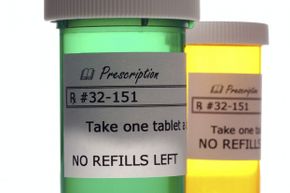More than 1 billion people visit a doctor's office, hospital outpatient care department or an emergency department in the U.S. every year, and about 136 million of those visits are to the 5,004 emergency departments across the country [sources: CDC, CDC, Emergency Medicine Network]. If that sounds like a lot of chest pains and broken bones, you're right. Sort of.
It turns out that as many as half to three-quarters of all emergency department visits in the U.S. aren't actually life-threatening situations [source: Robert Wood Johnson Foundation]. While some think the ER is a convenient solution for people without other care options, only about 3 percent of those emergency department visits are people who don't have a primary care doctor to call or any other place to go when they're sick. The majority of those emergency complaints could have been treated either at an urgent care center, by a primary care physician or, perhaps surprisingly, at home [sources: Robert Wood Johnson Foundation, CDC].
Advertisement
So what are people going to the ER for, if not emergencies? To know that, we need to know what emergency department physicians consider life threatening; pretty much everything else falls into the "not an emergency" category.
First things first about emergencies: Calling 911 is the best thing to do in the most life-threatening health emergencies, and it's appropriate for the most critical conditions such as when someone is choking, isn't breathing or is severely burned. Yes, in these situations, please, go to the ER where they can and will help. The emergency team that arrives in an ambulance is able to begin lifesaving care on the way to the hospital, and that timely treatment during transit may be the difference between life and death when it comes to a true health emergency. Problems such as uncontrolled bleeding, sudden and severe pain, difficulty breathing, and symptoms of a heart attack or stroke should also be considered an emergency [source: NIH].
But that minor scrape that's stopped bleeding, the achy ear you woke up with this morning or that urge to get your annual flu shot today during your lunch break? None of those is life-threatening, yet people visit hospital emergency departments every day for those very reasons. And while that bad bruise may seem like a high priority to you — we get that; it hurts — the no-appointment-needed convenience of the ER is also not a good reason to use emergency resources. Consider an urgent care facility or call your doctor before rushing to the hospital. Not only will emergency care cost you more than urgent or general care, an emergency department is designed to treat (surprise!) emergencies, and can't help you with the same general care a family physician provides.










